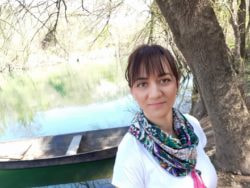
Tito lives on in Montenegro
Tito is back in Podgorica, but nobody knows why.
|23.01.2019
|
“I wasn't present at the opening because I believe it is hypocritical for people who disparaged Tito the most in the ’90s to now erect this monument under somebody's orders.”
Marko Perković, General Consulate of the Socialist Federal Republic of YugoslaviaThe Serbian Orthodox Church representative pleaded with the authorities to “stop building the future of Montenegro on fratricide,” saying that it would be better to erect a monument to Mussolini than to Tito.

Marijana Camović Veličković
Marijana Camović Veličković graduated from the Faculty of Law in Podgorica and has been working as a journalist since 2001. Since its establishment in 2013, Camović has been head of the Trade Union of Media of Montenegro, and has been particularly interested in the topics of media freedoms, the relations of media owners toward employees and the labor rights of workers in the media sector. She is also a board member of the European Federation of Journalists.
This story was originally written in Serbian.